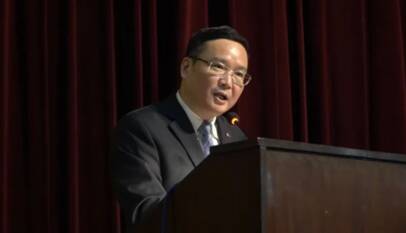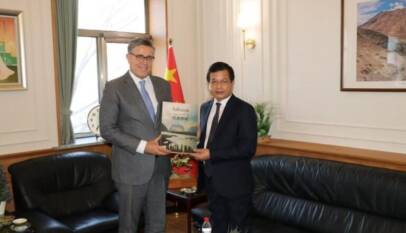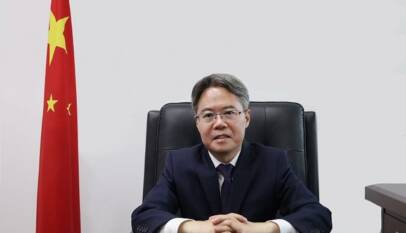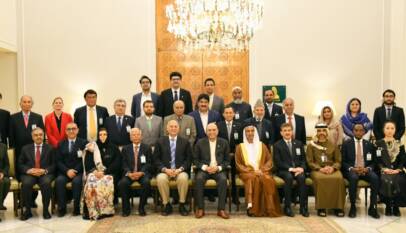State Bank of Pakistan takes measures to facilitate exporters
Governor State Bank of Pakistan (SBP), Dr Reza Baqir has briefed media about the government's two new initiatives to create ease for the exporters. Under first policy, exporters would be given PKR300 billion of additional loans in which commercial banks would offer PKR200 billion and State Bank of Pakistan would grant PKR100 billion of loans. Federal Government will bear the cost of the loan. Through the export refinance scheme lenders will pay the discount rate of 3% from the original cost of 13.25%. This will minimize exporters' input cost leaving more money to increase exports' value. Secondly, the export finance scheme offers exporters short-term credit availability with concessionary rates and long- term financing facility. SBP amended the previous rule which would only allow import advance payments of up to $10,000 per invoice for the import of raw material and spare-parts by the importers' cum exporters. Now the banks are authorized to run the advance payment up to $10,000, or equivalent, which will boost manufacturing units in the country.
Governor State Bank of Pakistan (SBP) Dr Reza Baqir announced two new measures designed to facilitate exporters in a press conference on the heels of a press conference led by Advisor to the Prime Minister on Finance Hafeez Sheikh on Monday in which he had also announced two pro-exporters measures – one of which was reiterated by the Governor: exporters would receive 300 billion rupees of additional loans – 200 billion rupees from commercial banks and 100 billion rupees from the SBP – and the cost of the loan would be borne by the government under the export refinance scheme with a much lower applicable rate of 3 percent relative to the discount rate which is 13.25 percent. One would hope that the discounted discount rate would reduce the exporters’ input costs sufficiently to give the needed boost to raise the total value of exports; however, the jury is still out as to whether this measure would make our exporters: (i) become competitive in the international market as a result given that other input costs remain higher than prevalent in other competing countries; and (ii) those exporters who had lost markets due to an overvalued rupee during Ishaq Dar’s tenure and more recently due to an undervalued rupee, by 6 percent at last count, which has raised the cost of their import of raw materials and semi-finished products, will be able to get back their lost buyers – a challenging prospect at best.
One would assume that the intent of the second pro-exporters’ measure Dr Baqir announced was to deal with the undervalued rupee, a patently flawed policy in effect since May this year, namely authorising dealers to effect advance payment up to 10,000 dollars per invoice on behalf of manufacturing concerns for import of raw material and spare-parts for their own use only as well as for Pakistani firms acquiring services from abroad; the amount of 10,000 dollars is appallingly low and begs the question as to which exporters/consultants, if any, are the target beneficiaries.
Dr Baqir clarified that the intent was to benefit the small and medium enterprises (SMEs), however, Pakistan’s SME sector, excluding wholesalers and retailers, like in other developing countries, is mainly indigenous-based and not reliant on imports. The basic problems facing our SMEs, as highlighted repeatedly by academics and government research institutes/relevant departments/ministries, are the lack of a conducive and enabling regulatory environment, need to develop industrial clusters and provide business development services in all areas of business management. More recently, there are concerns that with the anticipated entry of Chinese SMEs as part of the China Pakistan Economic Corridor, local SMEs would take a hit.
Be that as it may, the fact that both the Adviser to the Prime Minister on Finance and the Governor SBP are focusing attention on increasing the country’s exports in value terms especially as remittances (critical for narrowing the trade deficit) witnessed during the first quarter of the current year, by 2 percent, must be appreciated. It is the most desired form of earning foreign exchange because it not only reflects the manufacturing strength of a country but also its capacity to strengthen its reserves by earning as opposed to borrowing. However, the measures that the two economic team leaders have formulated may not be sufficient especially given that their pro-export measures are more than offset by anti-export measures.
To conclude, the government must focus on increasing the total value of our exports and for this purpose, the need is to abandon reliance on exporting our surplus and to develop an export-led manufacturing base though unfortunately the high discount rate would act as a major deterrent as it is to existing large-scale manufacturing sector.
Chinese envoy Zhao Shiren urges students to uphold integrity and strengthen China-Pakistan ties
LAHORE:The Consul Generals from several countries and other distinguished guests attended …











